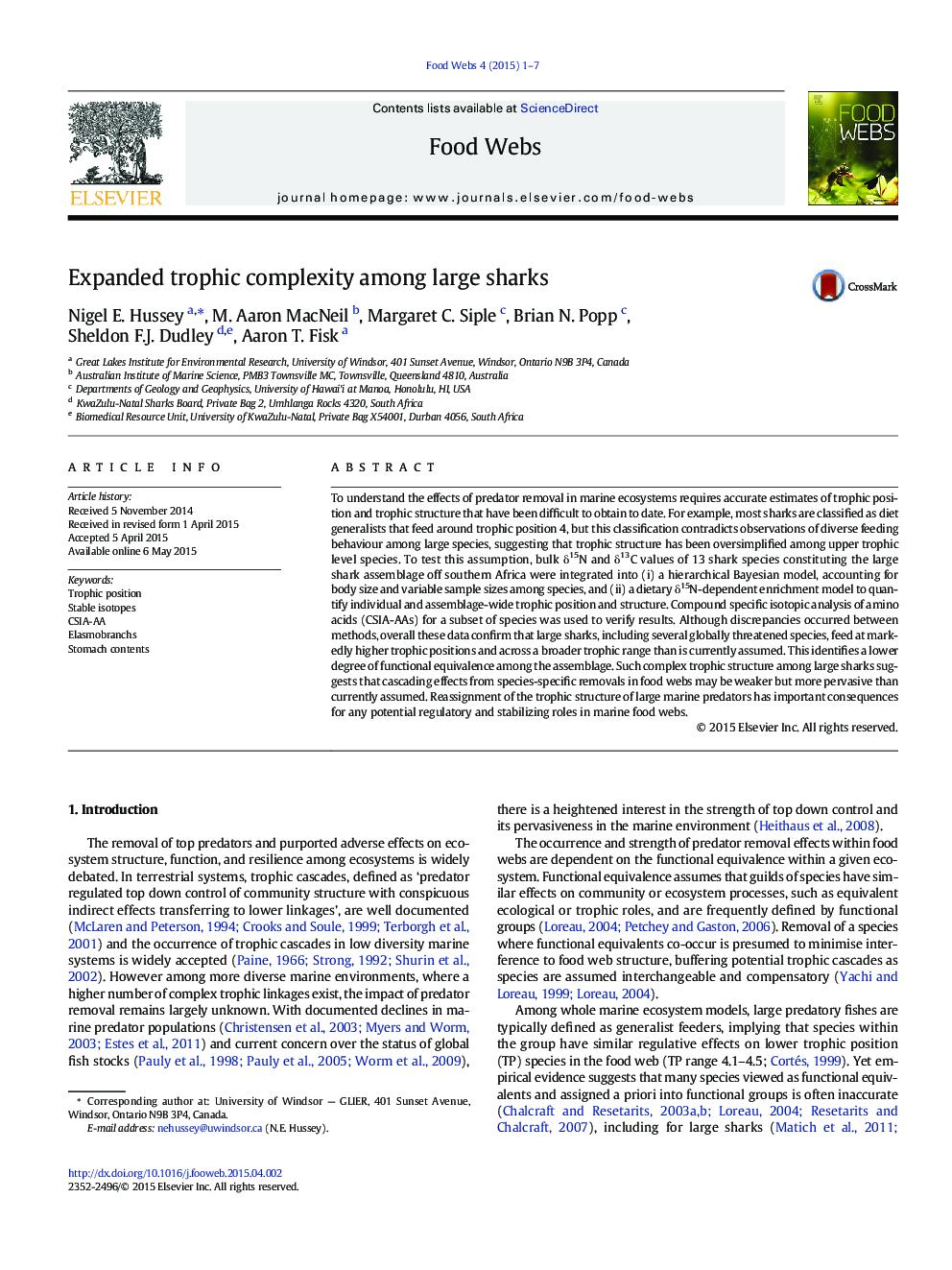| Article ID | Journal | Published Year | Pages | File Type |
|---|---|---|---|---|
| 4493279 | Food Webs | 2015 | 7 Pages |
To understand the effects of predator removal in marine ecosystems requires accurate estimates of trophic position and trophic structure that have been difficult to obtain to date. For example, most sharks are classified as diet generalists that feed around trophic position 4, but this classification contradicts observations of diverse feeding behaviour among large species, suggesting that trophic structure has been oversimplified among upper trophic level species. To test this assumption, bulk δ15N and δ13C values of 13 shark species constituting the large shark assemblage off southern Africa were integrated into (i) a hierarchical Bayesian model, accounting for body size and variable sample sizes among species, and (ii) a dietary δ15N-dependent enrichment model to quantify individual and assemblage-wide trophic position and structure. Compound specific isotopic analysis of amino acids (CSIA-AAs) for a subset of species was used to verify results. Although discrepancies occurred between methods, overall these data confirm that large sharks, including several globally threatened species, feed at markedly higher trophic positions and across a broader trophic range than is currently assumed. This identifies a lower degree of functional equivalence among the assemblage. Such complex trophic structure among large sharks suggests that cascading effects from species-specific removals in food webs may be weaker but more pervasive than currently assumed. Reassignment of the trophic structure of large marine predators has important consequences for any potential regulatory and stabilizing roles in marine food webs.
